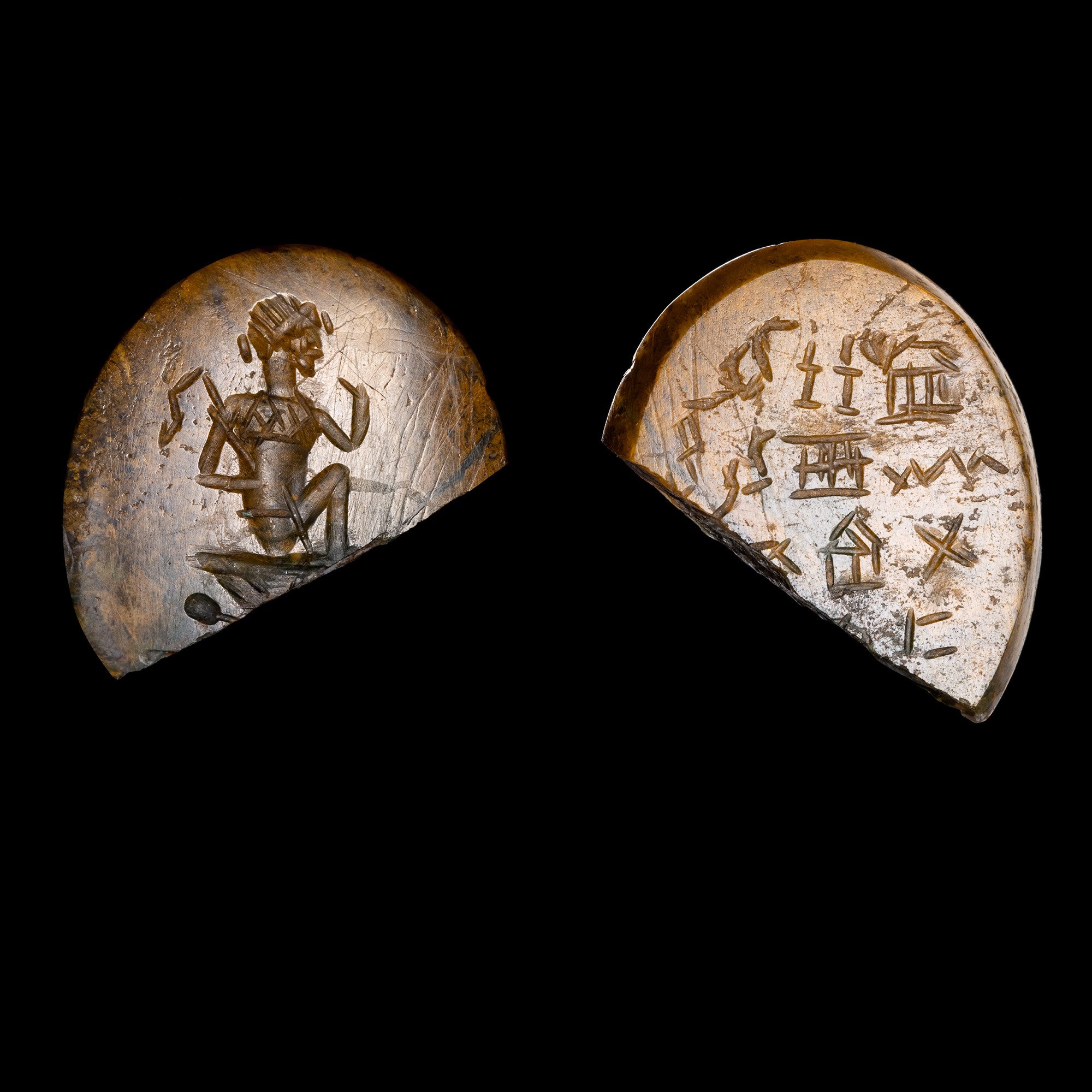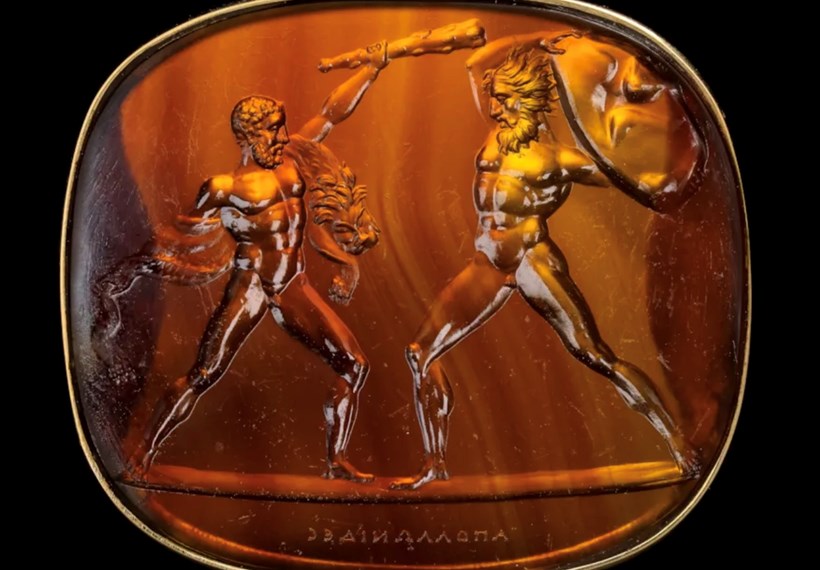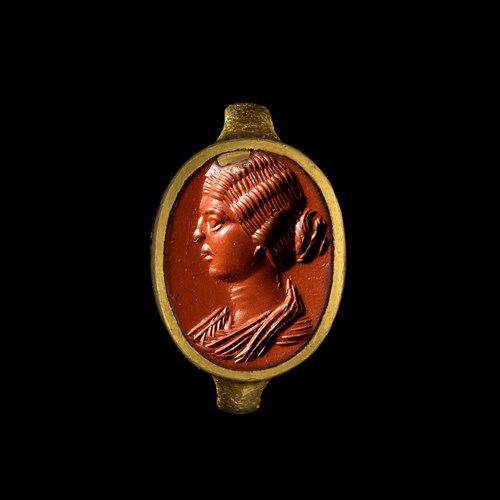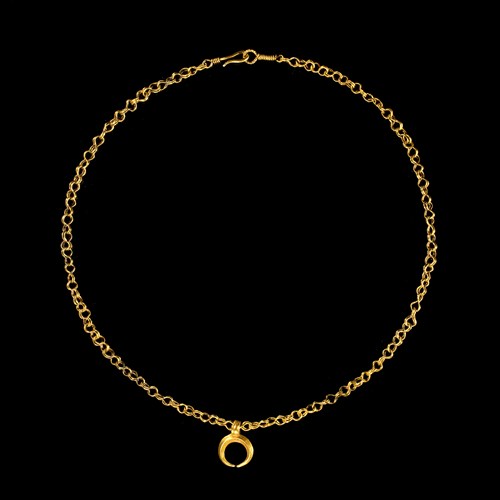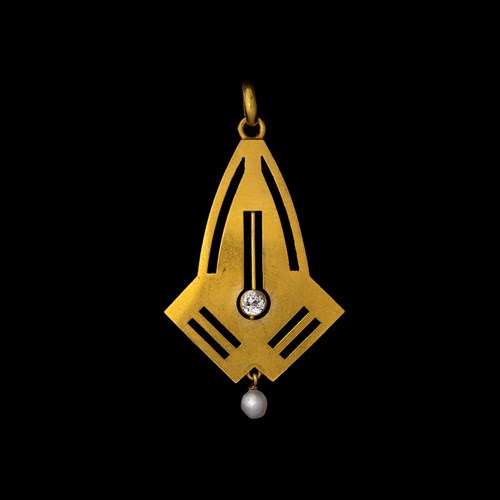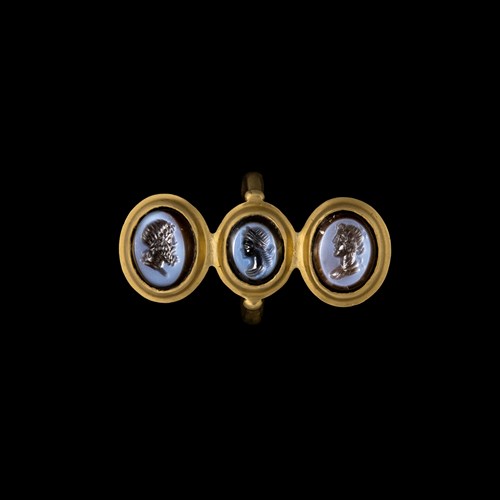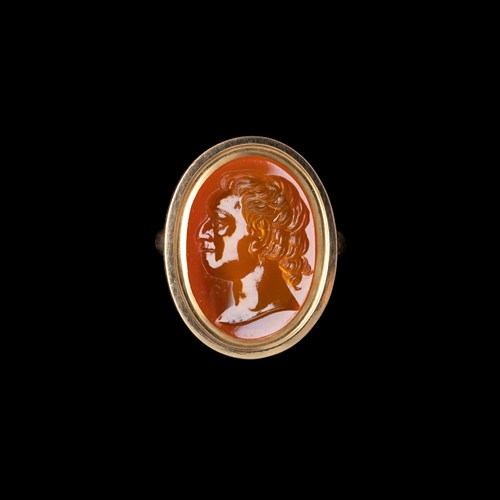Marketplace
A Roman gnostic intaglio. Harpocrates.
A Roman gnostic intaglio. Harpocrates.
Date 2nd-3rd Century A.D.
Period Roman art
Origin London, STOCK
Medium Yellow jasper
Dimension 2.3 x 2.2 cm (0⁷/₈ x 0⁷/₈ inches)
On yellow and green jasper depicting Harpocrates seated in profile to the right on a lotus flower. On the reverse, glyphs and inscriptions.
'Iam vero etiam Harpocratem, statuasque Aegyptiorum numinum, in digitis viri quoque portare incipiunt', affirms Pliny the Elder (H.N., XXXIII.41), and thereby attests to the custom of wearing 'on the finger' engraved amulets and gems of the image of this Egyptian divinity that is Harpocrates, the child Horus, son of Isis and Osiris.
Venerated by the Ptolemies in Egypt, and in the Mediterranean world as a solar and cosmic god— he is represented in the form of a naked child, sitting or standing on a lotus flower, with a shaved head (with childhood sidelock), and with his index finger to his mouth.
This iconography refers to the Hermopolitan myth describing the birth of the Sun in a lotus chalice emerging from primordial chaos, and referred to the fertile life power of the Nile or the 'Urwasser' Lotus. The lotus being for the Egyptians the agent of the daily miraculous birth of the sun. Thus the syncretic nature of these Gnostic gems offers a reinterpretatio of the god Harpocrates, making him a protective god of human, animal and cosmic fertility.
'Iam vero etiam Harpocratem, statuasque Aegyptiorum numinum, in digitis viri quoque portare incipiunt', affirms Pliny the Elder (H.N., XXXIII.41), and thereby attests to the custom of wearing 'on the finger' engraved amulets and gems of the image of this Egyptian divinity that is Harpocrates, the child Horus, son of Isis and Osiris.
Venerated by the Ptolemies in Egypt, and in the Mediterranean world as a solar and cosmic god— he is represented in the form of a naked child, sitting or standing on a lotus flower, with a shaved head (with childhood sidelock), and with his index finger to his mouth.
This iconography refers to the Hermopolitan myth describing the birth of the Sun in a lotus chalice emerging from primordial chaos, and referred to the fertile life power of the Nile or the 'Urwasser' Lotus. The lotus being for the Egyptians the agent of the daily miraculous birth of the sun. Thus the syncretic nature of these Gnostic gems offers a reinterpretatio of the god Harpocrates, making him a protective god of human, animal and cosmic fertility.
Date: 2nd-3rd Century A.D.
Period: Roman art
Origin: London, STOCK
Medium: Yellow jasper
Dimension: 2.3 x 2.2 cm (0⁷/₈ x 0⁷/₈ inches)
Provenance: Old private collection of Mr. Levy, acquired in the 1980s at Hôtel Drouot
Literature: MASTROCINQUE, A., Sylloge Gemmarvm Gnosticarvm, Parte 1., Monografia 8.2.I, 2003
More artworks from the Gallery


